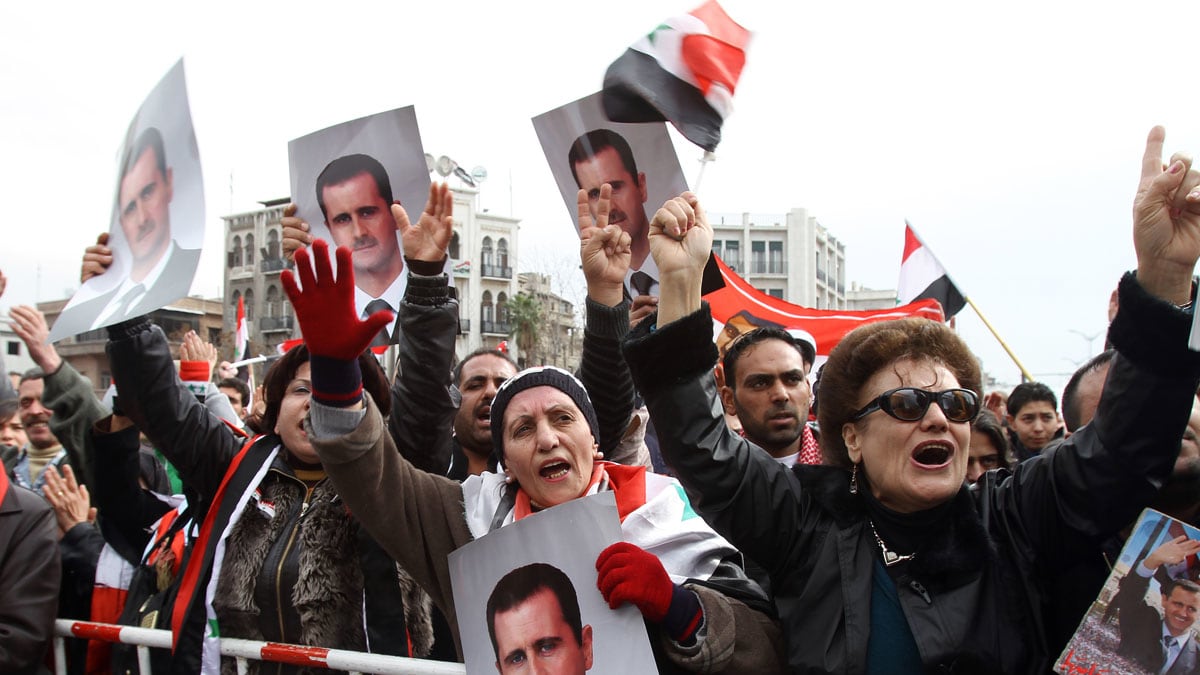Red Cross Begins Homs Evacuations
Following U.S. Secretary of State Hillary Clinton’s warning that Assad would “pay a heavy cost” if he continued to block aid, a mission to evacuate wounded people in the besieged city of Homs is at last underway. The International Committee of the Red Cross confirmed that the rescue mission began on Friday evening. Working with volunteers from the Syrian Arab Red Crescent, the I.C.R.C. staff members said they had negotiated evacuations of women and children with both government and rebel forces in the district of Baba Amr, a rebel stronghold in Homs. Though seven people have been taken to local hospitals, four Western journalists—two wounded and two who were killed in Homs—have not yet been evacuated.

Clinton: Assad Will Pay 'Heavy Cost'
Will this be the tipping point for some action on Syria? Foreign ministers from more than 50 countries, calling themselves the Friends of Syria, are holding their first meeting Friday to demand Syria allow international aid be delivered to civilians as the government continue brutal assaults on the city of Homs. A crowd of about 2,000 sympathizers of President Bashar al-Assad attempted to storm the meeting in the Tunisian capital, but were driven back by police with truncheons. U.S. Secretary of State Hillary Clinton warned Assad that the opposition will arm itself and overthrow him if diplomacy fails. Clinton said Assad will "pay a heavy cost' if he continues to block aid, and added the Syrian leader will have "more blood on his hands." The Syrian opposition said on Friday that they had begun to receive military aid, but Western officials would not confirm the report. In Syria, there were reports that the crackdown on Homs continued, as one opposition group reported 11 dead on Friday.
Is the Syrian Regme Targeting Journalists?by Mike Giglio
In an interview with The Daily Beast, the head of the Committee to Protect Journalists discusses why traditional media and citizen reporters are a threat to struggling dictators.
It’s been a tragic week for journalists in the Middle East, with news of the deaths of the New York Times’ Anthony Shadid, Sunday Times correspondent Marie Colvin and French photographer Rémi Ochlik. As the Arab Spring revolutions continue to unfold across the region, the battle to get information out of conflict zones to the world at large has been a dangerous one for reporters of all kinds, from citizen journalists with camera phones to the staff of major global publications. This truth became painfully apparent with the journalism community’s latest losses: it was suggested yesterday that Colvin, Ochlik and their colleagues may have been directly targeted in shelling by the Syrian army, with French president Nicolas Sarkozy saying the journalists were “assassinated”. The pair were killed inside a house that was reportedly being used as a press center.
The Defiant Holdouts In Homsby Katie Paul and Rana Riziqu
As the Syrian government’s bombardment of the city heads into its 20th day, both rebels and ordinary citizens struggle to hold out.
In past months, most of the daily dose of hellish scenes coming out of Homs had a perverted rhythm to them. “These are your reforms, Bashar al-Assad,” the narrator generally intoned over and over, panning over scenes of buildings reduced to rubble or zooming in on the bloodied face of a dead man. But as the government's heaviest offensive yet continued to close in on the southwestern neighborhood of Bab Amro, dragging into its twentieth day, there was little energy left for stylistic normalcies. In the four videos uploaded onto the Bab Amro News site on Wednesday, the narrator's voice cracks, panicked, as he hurries to film what he's seeing before dashing back inside: the hiss of shells as they whizz into the neighborhood, then columns of smoke rising into the sky like mushrooms in a field, one after another, the closest one just a few doors down the block from him. The shells land every few seconds. In another, a paramedic at a makeshift field clinic wails after realizing that the toddler she is supposed to treat, a gaping hole under his armpit and his middle heaving precariously, is her grandson.
The Story Marie Died Tellingby Peter Bouckaert
Journalist Marie Colvin was killed in Syria on Wednesday, reporting the horrors from Homs. Human Rights Watch director Peter Bouckaert recalls his friend’s extraordinary personality and courage—and the story Marie paid with her life to tell.
Marie Colvin, the celebrated American war reporter who died in Homs on Wednesday, together with the young French photographer Rémi Ochlik, looked every bit the part of a war reporter.




